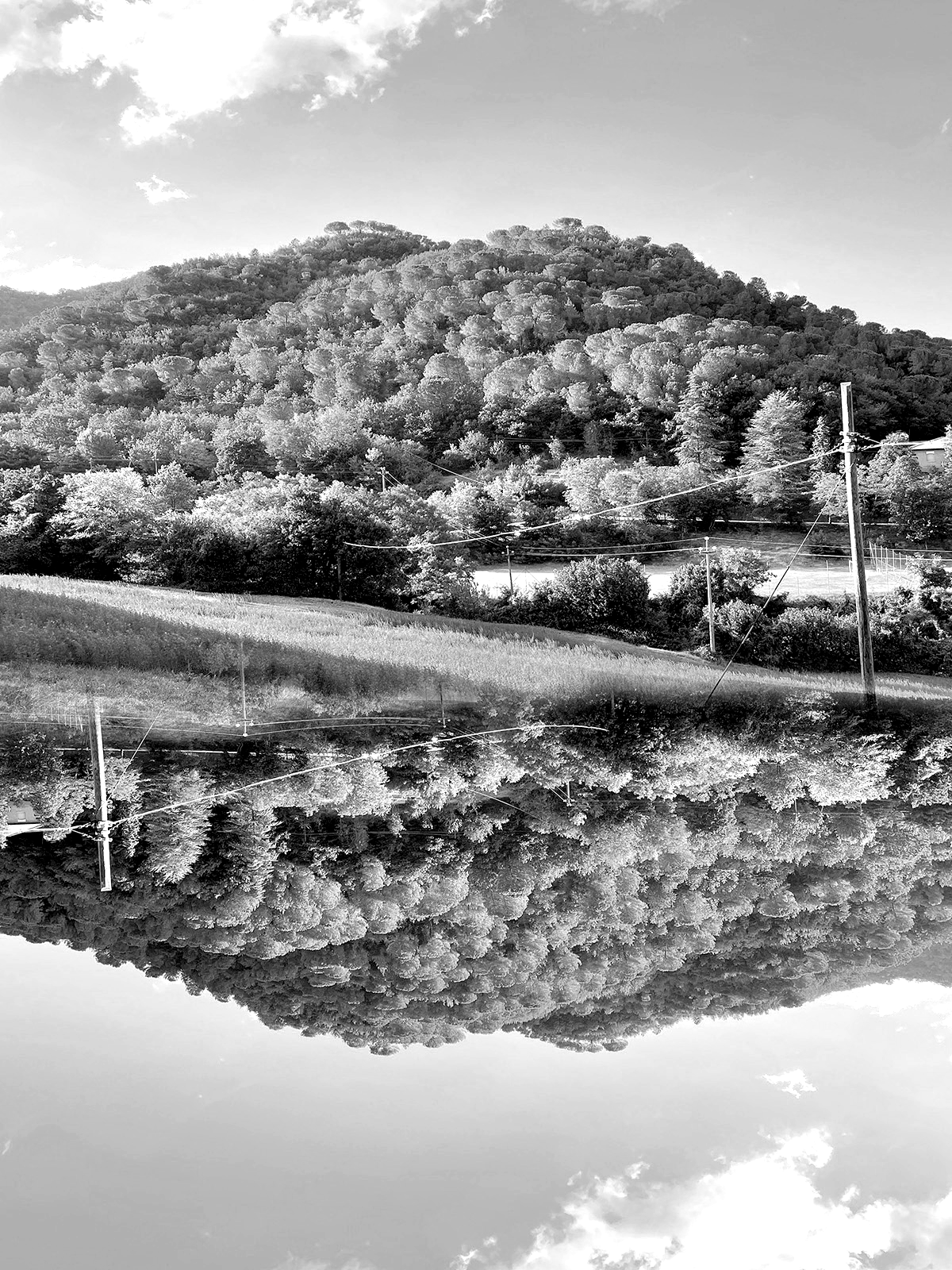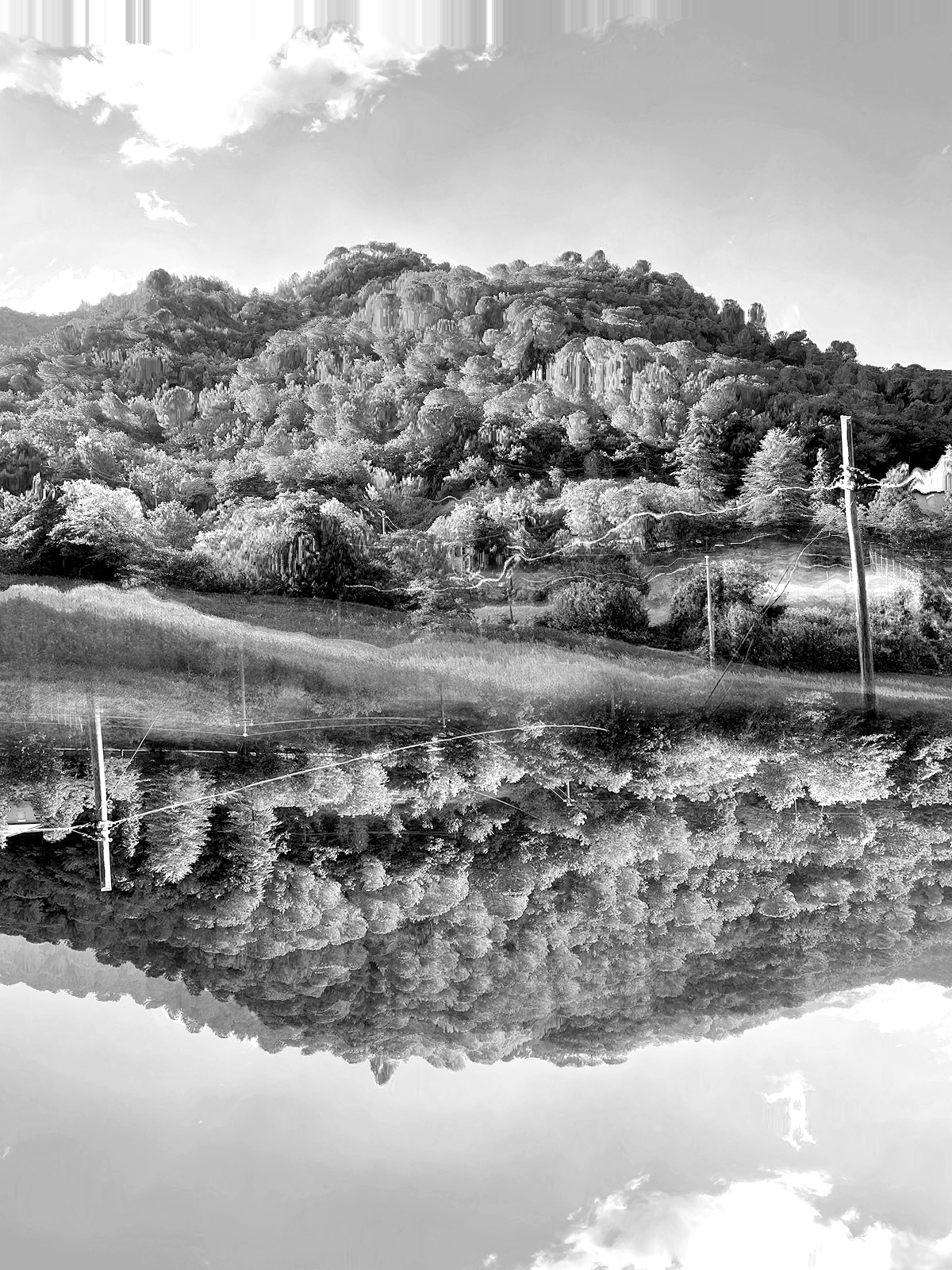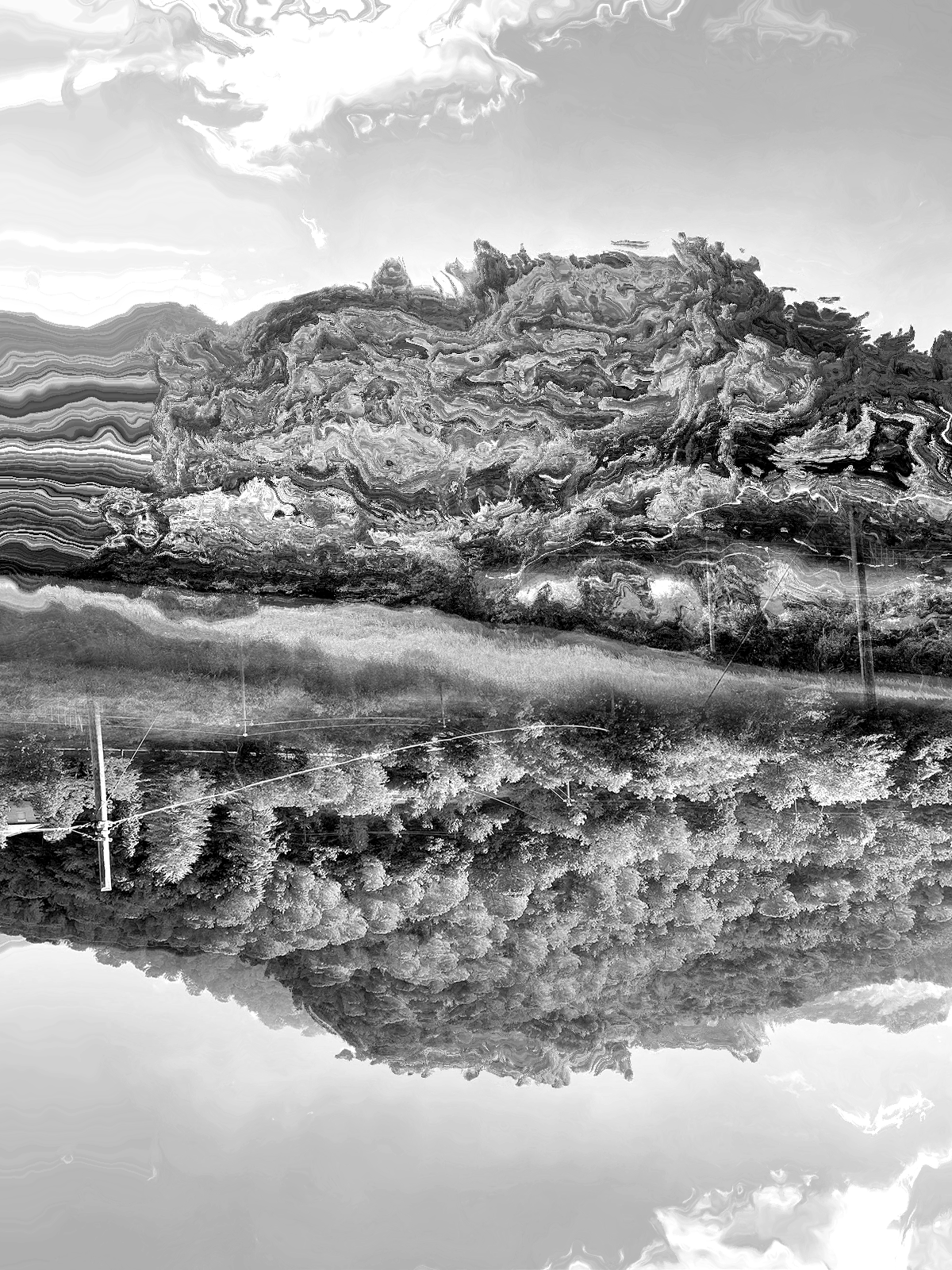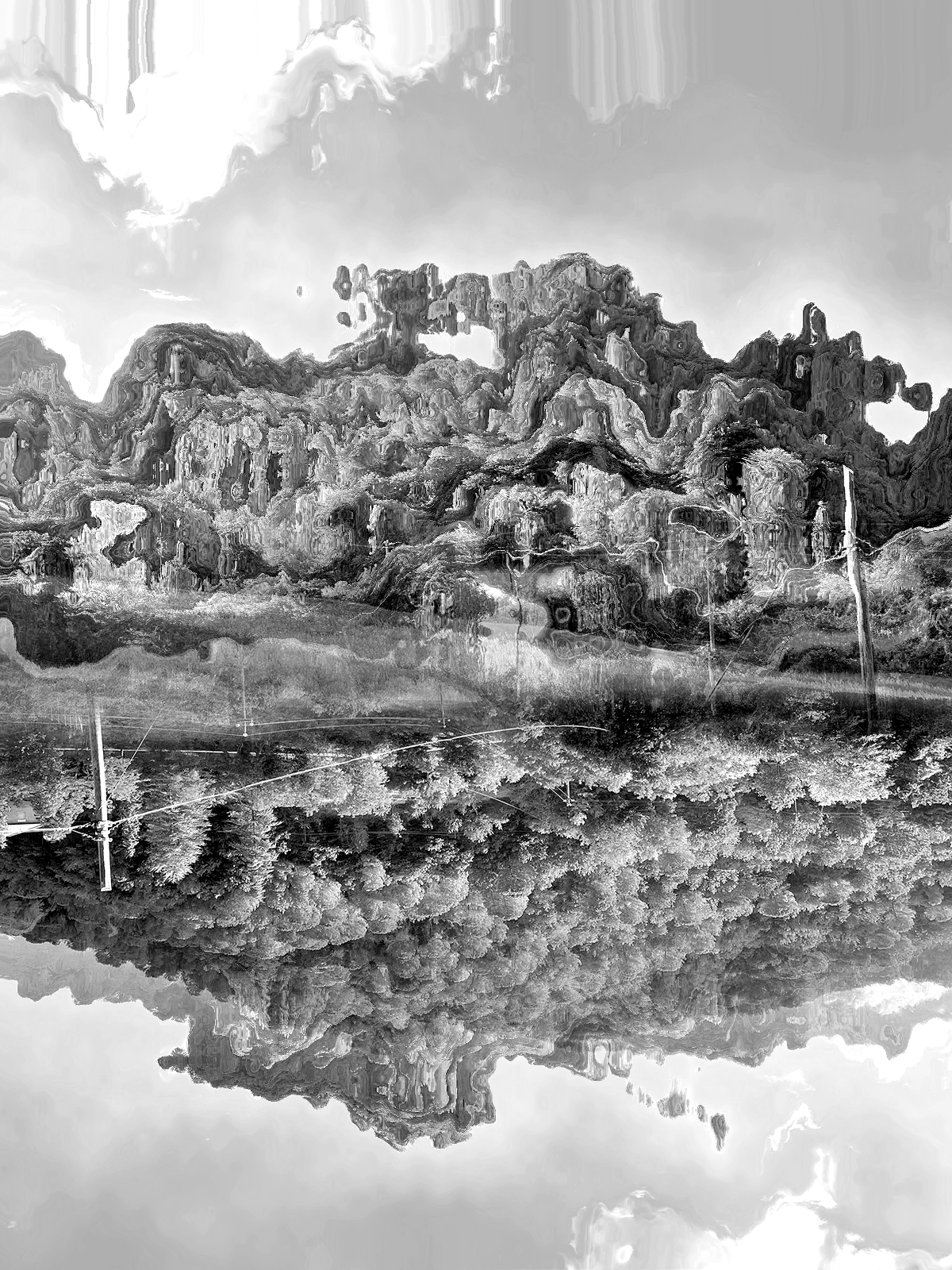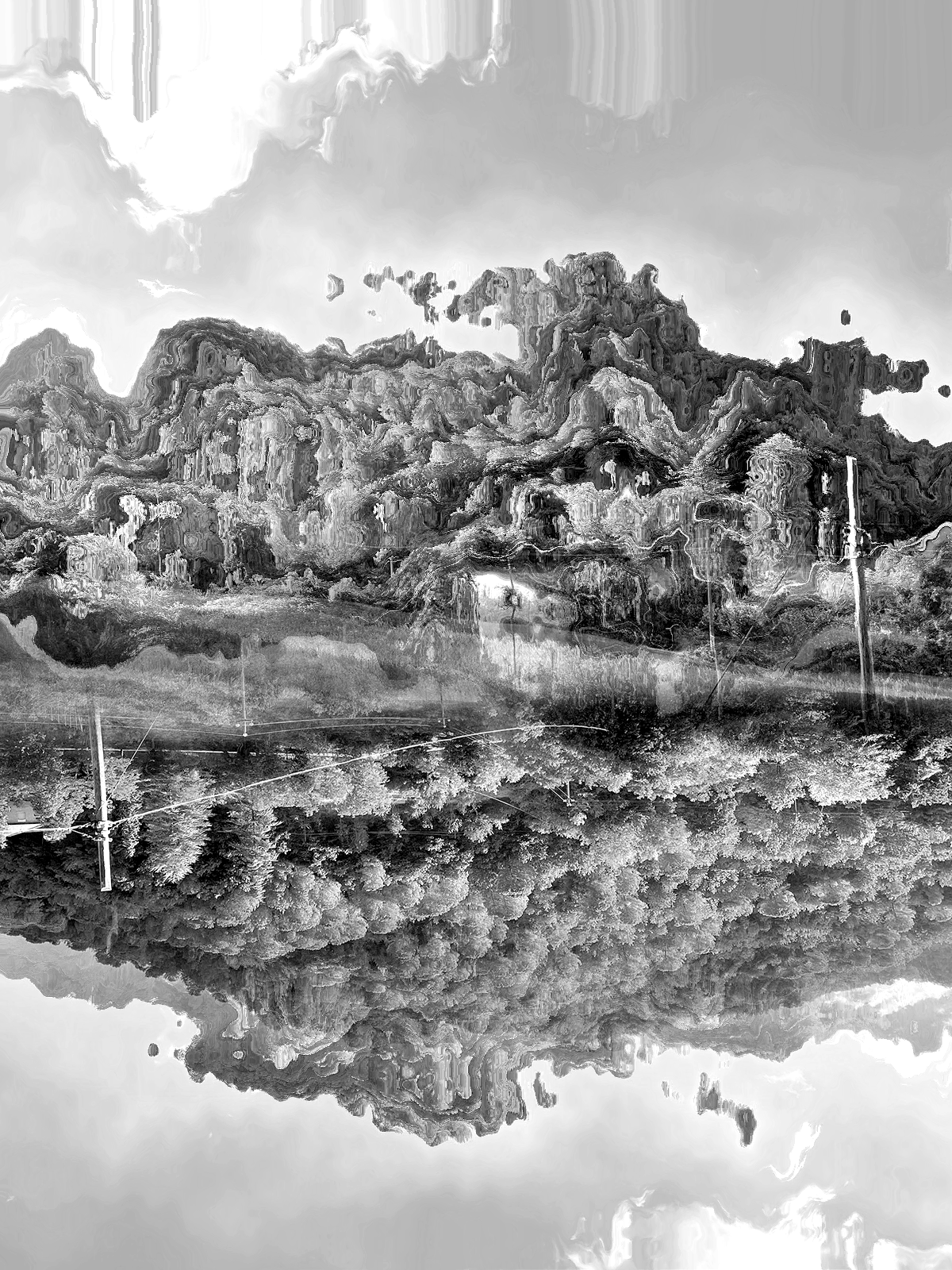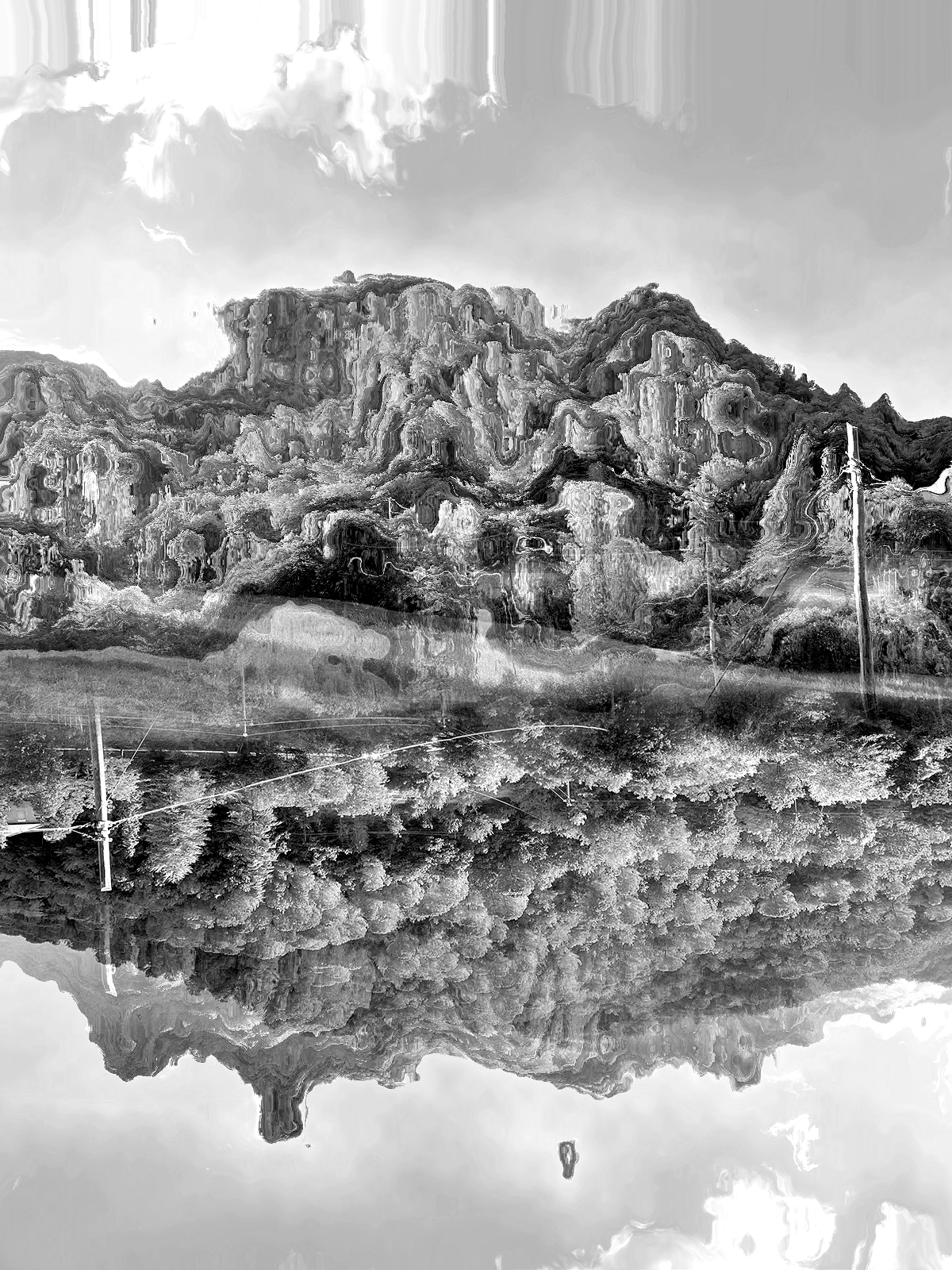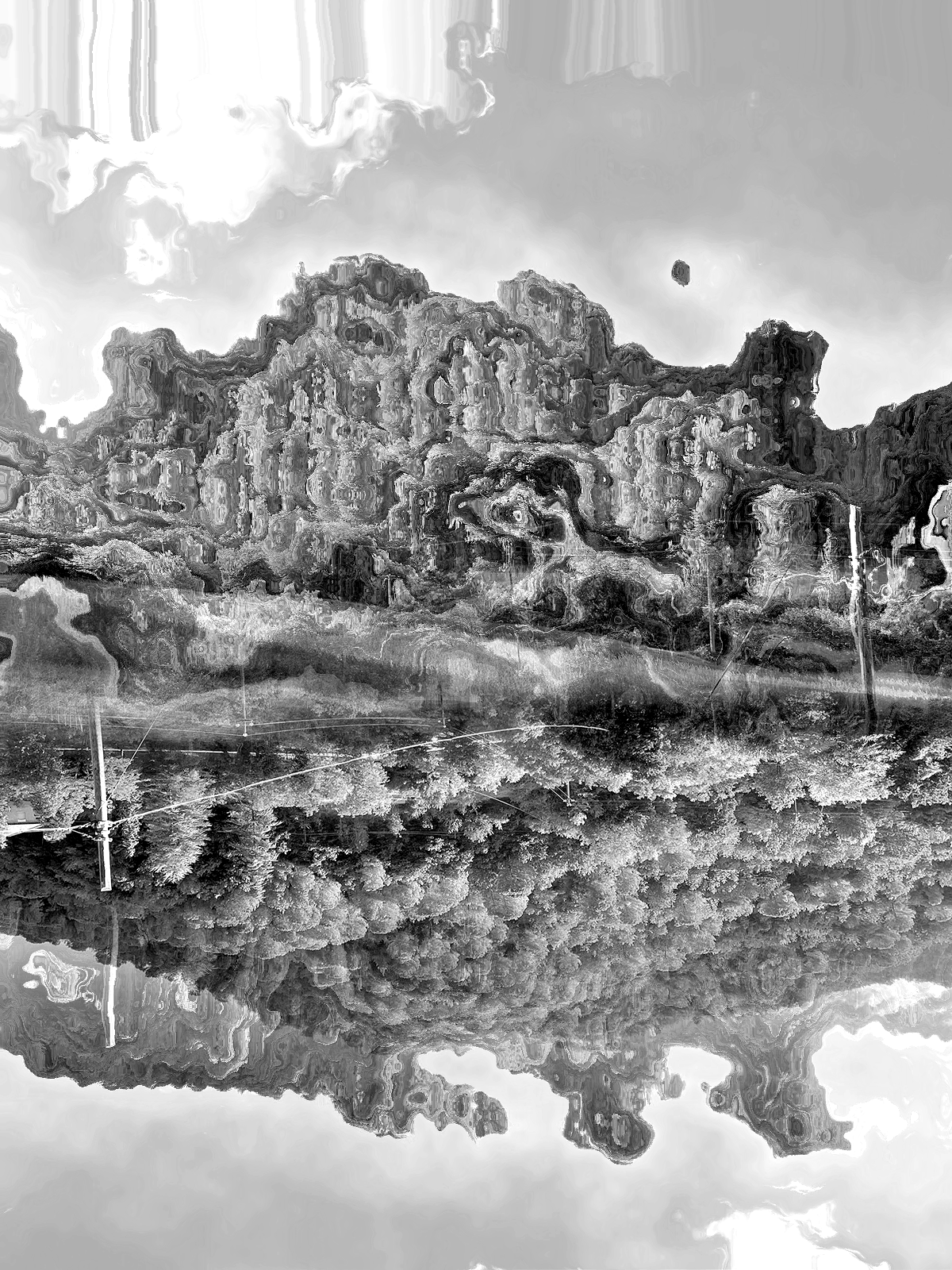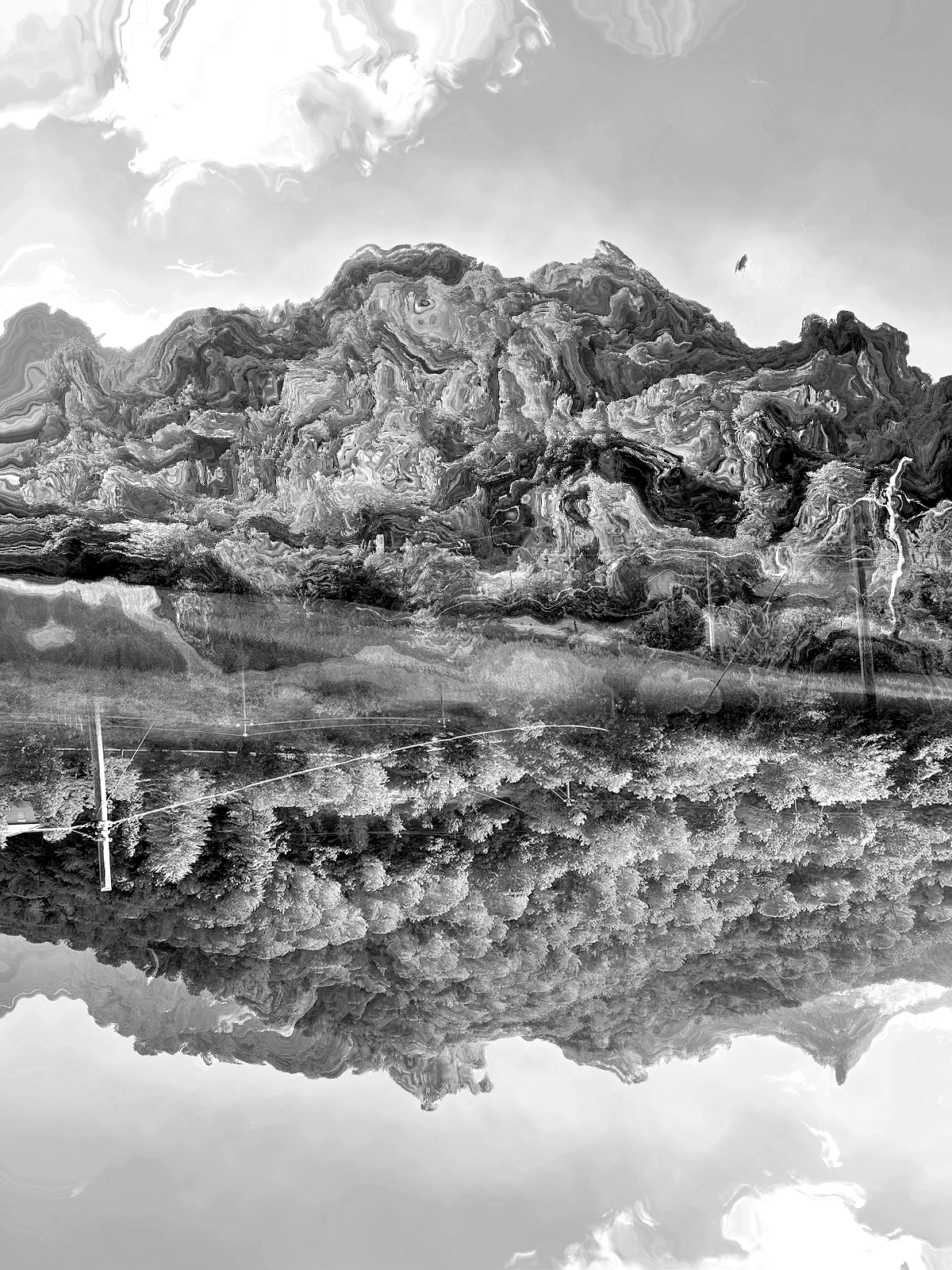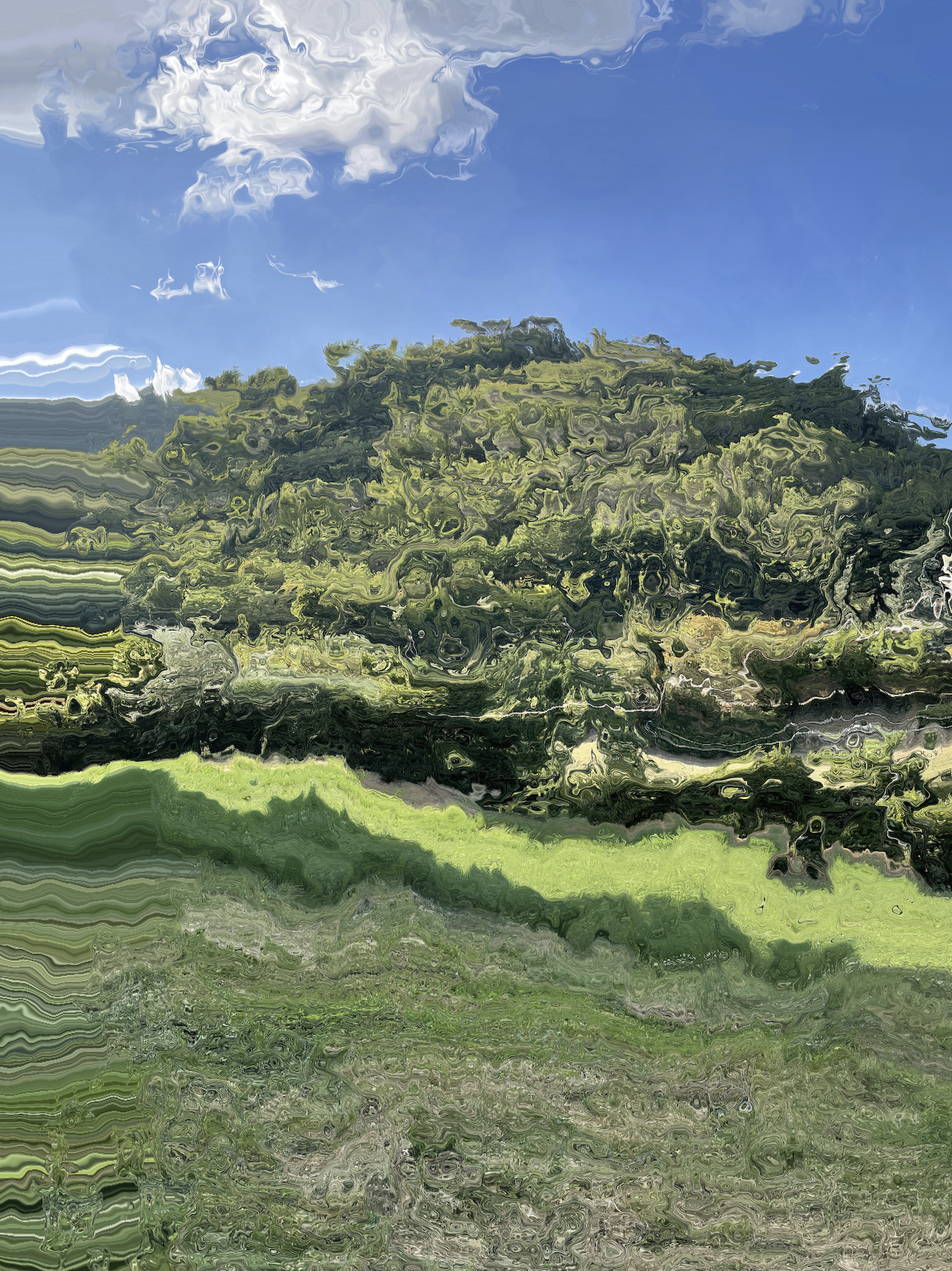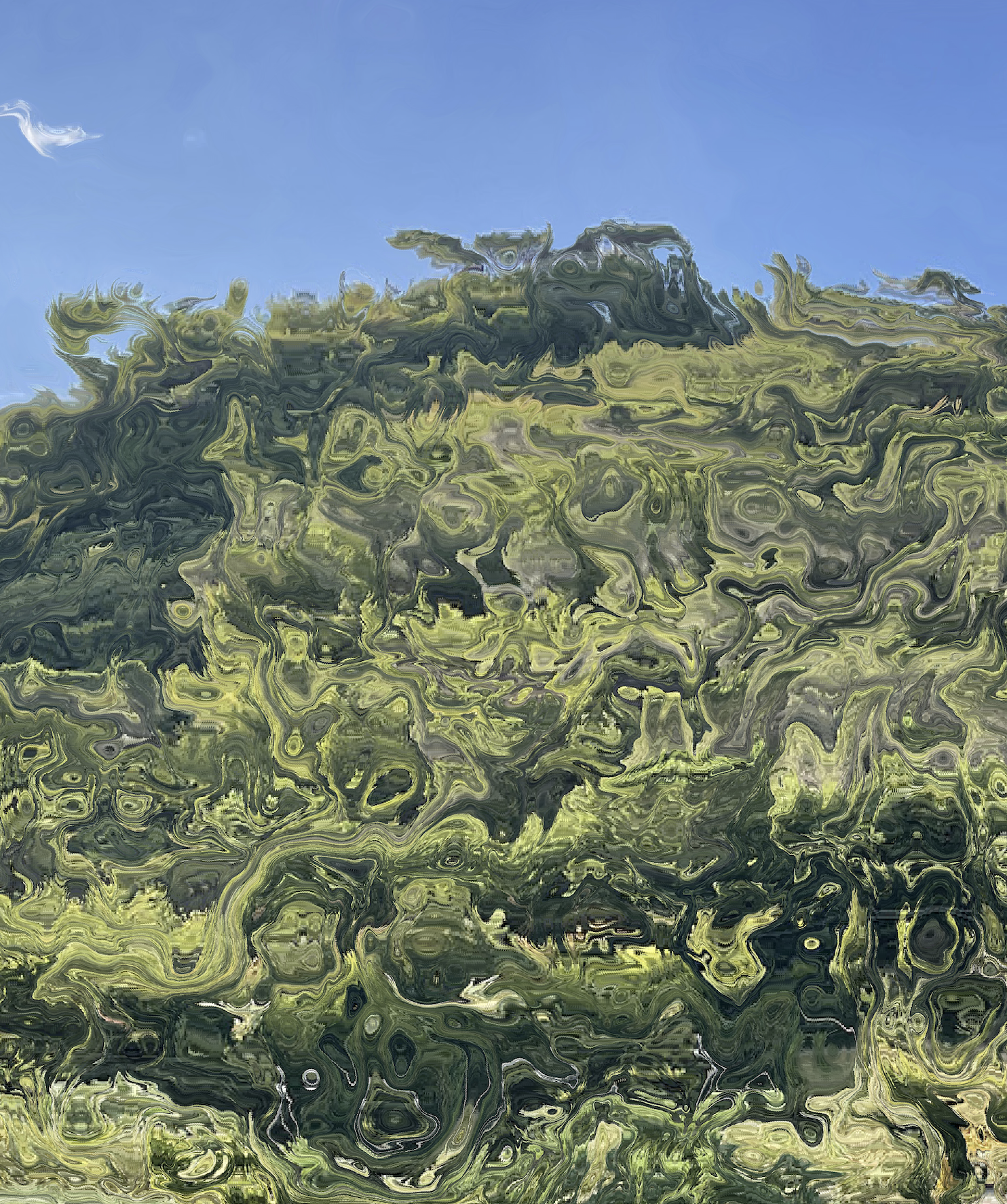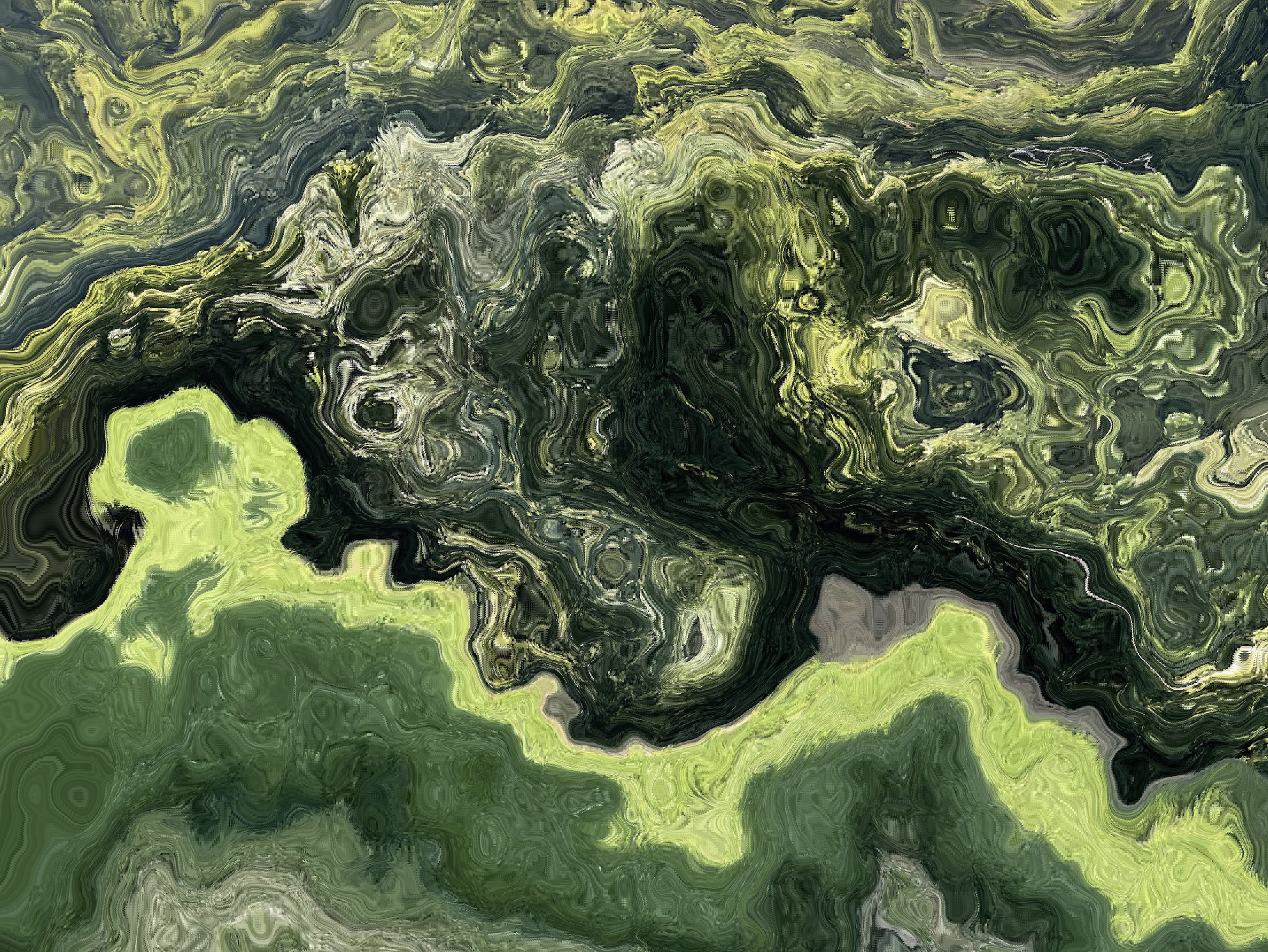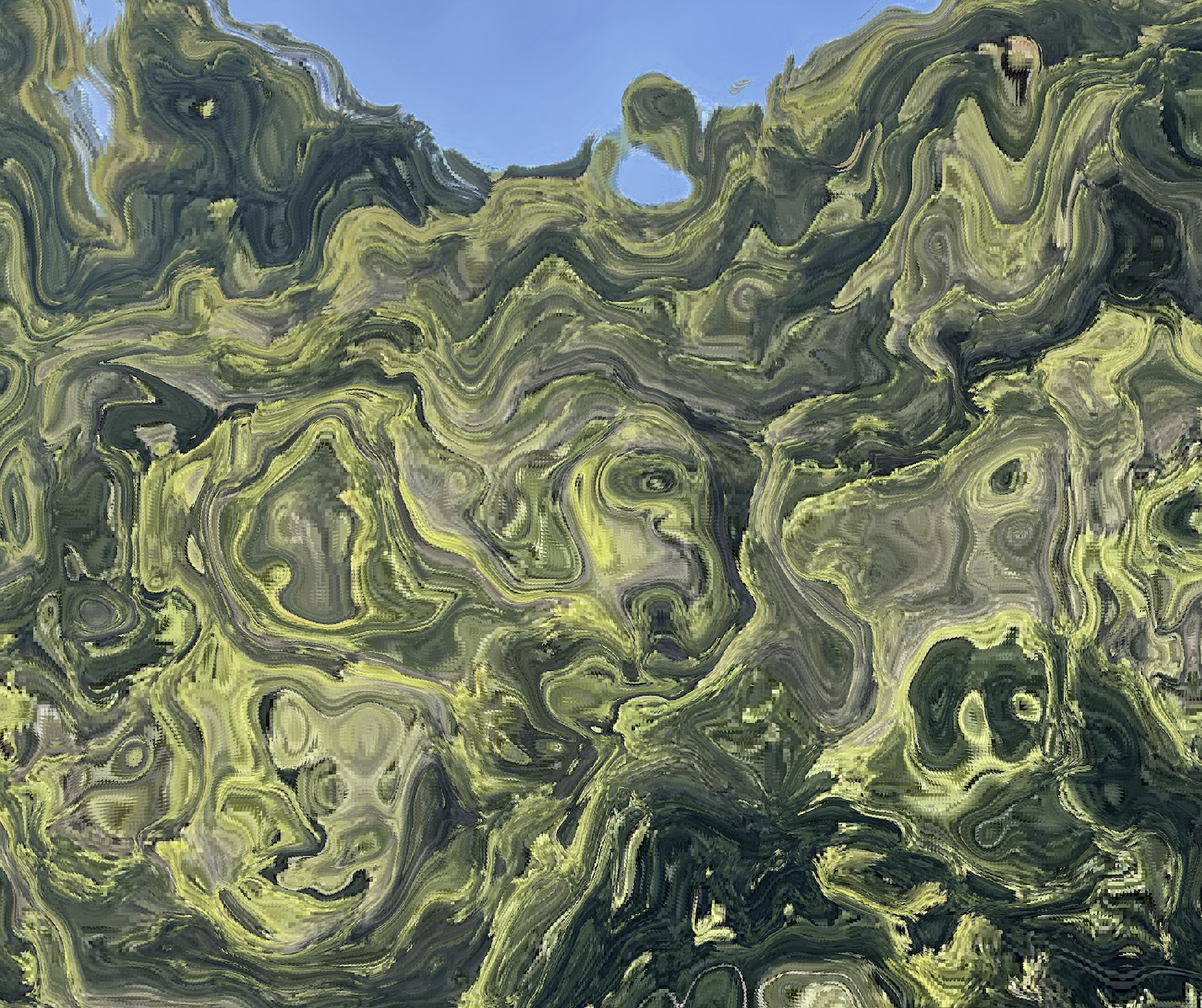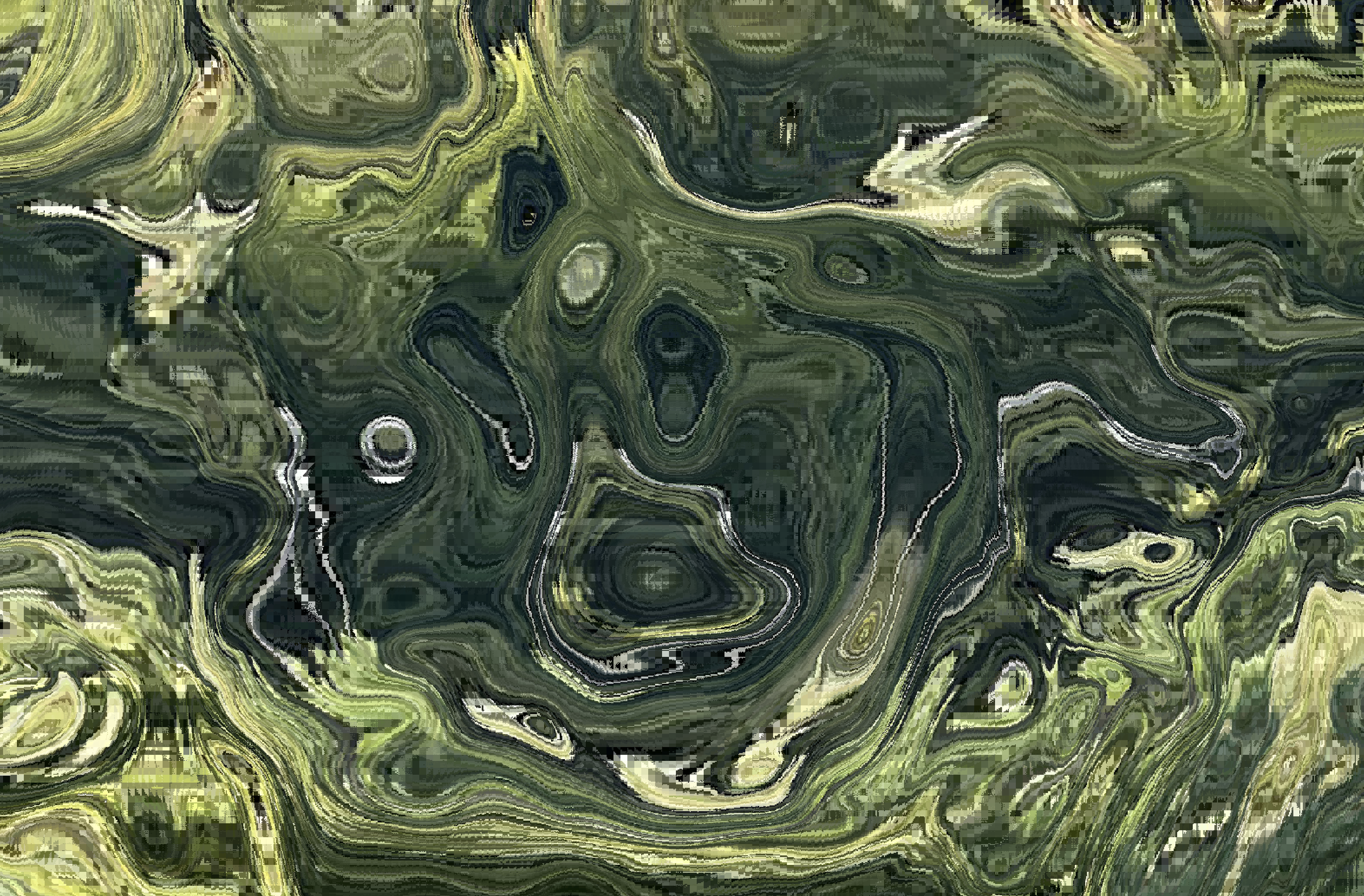
A generative digital landscape where water reshapes the planet and clouds form haunting faces — a poetic warning on climate change, inspired by Munch and Leonardo’s visions of pareidolia.
Liquid Landscapes Paraedolia
Liquid Landscapes is a generative digital artwork that simulates a planet reshaped by the relentless movement of water—an imagined yet urgent vision rooted in the realities of global warming and its catastrophic effects. Drawing from Edvard Munch’s iconic The Scream and his reflection on “an infinite scream passing through nature,” the work renders clouds and currents that morph into distorted, anguished faces. These fleeting forms become digital pareidolia—illusions hidden within abstraction—that echo Earth’s silent cry for help.
This large-scale projection work stages a visceral dialogue between water and fire: opposing forces in perpetual transformation. Waves appear to ignite, flames dissolve into liquid, creating a shifting landscape where destruction and renewal coexist. The result is a poignant metaphor for the urgency of climate action, compelling viewers to confront environmental crisis not as a distant concept, but as an immediate, sensory reality.
Leonardo da Vinci once described pareidolia as the ability to see “landscapes adorned with mountains, rivers, rocks… strange expressions of faces” within stains or textures. Liquid Landscapes extends this Renaissance insight into the digital realm—transforming simulated matter into abstract terrains that reflect the human psyche. Like Da Vinci’s visionary scenes, these liquid visions invite audiences to discover their own interpretations, fostering empathy and awareness in a world in flux.
Leonardo da Vinci once described the power of pareidolia, where one might see “landscapes adorned with mountains, rivers, rocks… strange expressions of faces” within mere stains on walls. Liquid Landscapes extends this timeless insight, reimagining natural scenery as abstracted reflections of the human psyche. Like Da Vinci’s visionary scenes, these liquid visions invite viewers to find their own meanings within the forms, asking them to confront, question, and ultimately empathize with a world in flux.

